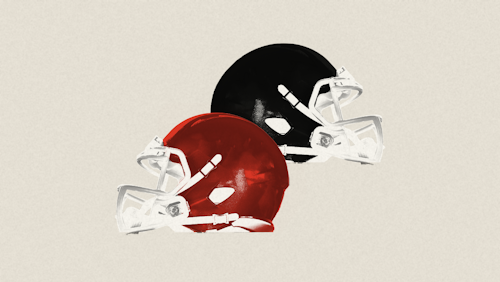Verbal Identity
Your Brand Walks Into a Bar: Voice

Your brand walks into a bar as a living, breathing human being. Is it reserved or gregarious? Old-fashioned or modern? Wearing a golf shirt or a Hawaiian shirt? Does it order a glass of red, a shot of tequila, or a bottle of water? If you can’t pick your brand out of a crowd, you’ve got a voice problem.
“We just aren’t reaching and converting our customers the way we want. What we need is a new content marketing plan. We need to rewrite our copy so that it converts. Maybe a new social media campaign.”
It was my freelance writing days, and I was sitting at a conference table with a new writing client. They were a well-established professional services firm that had hit an all-too-familiar identity crisis. For years, they’d been the big dogs in town. Now, they were starting to falter, struggling to find their voice amid a cacophony of competitors.
I’d already reviewed their existing content. They were right. Their site functioned well, but their blog content was unremarkable. Their website copy was generic. Their social needed some TLC.
But that wasn’t the full story. They were missing something else. Like a trained police dog, I sensed a bust.
“I agree,” I replied to Client X. “Do you have your voice guidelines in place?”
The blank look was enough for a response.
And there it was. The problem was deeper than bland website copy. I could rewrite landing pages all day, but it was going to be like playing blindfolded darts without this missing step in their branding work.
Here at Focus Lab, our verbal identity work goes through extensive research, evaluation, strategy, and recommendations, resulting in three take-homes for your team:
- Formal messaging and positioning (read this article to understand what that means)
- A defined verbal identity, including your brand’s voice
- A style manual that zips up recommendations for grammar, punctuation, diction, and more
What I want to consider are the voice components of a brand’s verbal identity, what its role is in a brand identity system, and why the heck your company needs it.
What is Brand Voice? And What About Tone?
“It’s not what you said, it’s how you said it.”
“You don’t sound like yourself. Is everything okay?”
“Don’t take that tone with me!”
If you’ve ever heard these phrases from your mom, dad, grandmama, or 8th-grade World History teacher (sorry about my ‘tude, Mrs. Mitchell), then you have a sense of what voice and tone mean.
Voice is about your brand personality. Tone is about how your brand delivers information in varying contexts.
Do This: A Voice and Tone Exercise
Picture it: Your brand walks into a bar as a living, breathing human being. Is it reserved or gregarious? Old-fashioned or modern? Wearing a golf shirt or a Hawaiian shirt? Does it order a glass of red, a shot of tequila, or a bottle of water?
Based on overall impressions, how would you describe it in three words? How would other people describe it? More importantly, how do you want other people to describe it?
That’s your brand voice, its overall personality. Our task is to help you define a presence that is memorable yet authentic. What voice will help you stay true to your purpose and exceed your business objectives?
Now, imagine your brand mingling at the office. It takes a call from the lawyer, writes a customer support email, does a podcast interview, interacts on social, and attends an industry convention.
That’s your brand tone — the “how you said it” of mom’s reproach. Your brand would still “be itself” but would adapt its communications approach to fit each of those scenarios. Perhaps it would use big-kid words with the lawyer, throw an emoji in the customer email, turn on the charm for the interview, banter on social, and let its hair down at the convention.
You know, just like you!
The High Stakes of Brand Voice and Tone
“I don’t think we have time for that kind of stuff. We really need to get straight with our marketing. We were thinking e-books, maybe? Some kind of lead-gen magnet.”
My Client X was still firmly in the sales-cures-ails camp.
“Definitely, those things can work. How do you want to sound in your content? Are we buttoned-up? Do we use slang? Emojis? Are we Pitch Men or hands-off?”
“We’re established experts.”
“So are your competitors. How are you going to sound different?”
There was that look again.
Many brands want to be seen as a friendly, established expert. That’s an okay place to start, but it’s not original enough to stand out. If that’s as far as you’re willing to go, maybe that’s as far as you’ll get — just okay.
You need another dimension — a little extra juju that is all your own. That’s the magic of voice. So go back to that bar. Invite your brand to join you for a while. Get to know each other.
What’s your brand really like?
Building out voice guidelines may seem secondary to your visual identity or marketing efforts, but they are an integral component of a cohesive brand identity system that includes everything from your logo and color palette to name and core values.
Besides, your copywriter will ask to see them anyway.
Photos by Spencer Davis and Chris Ralston on Unsplash

